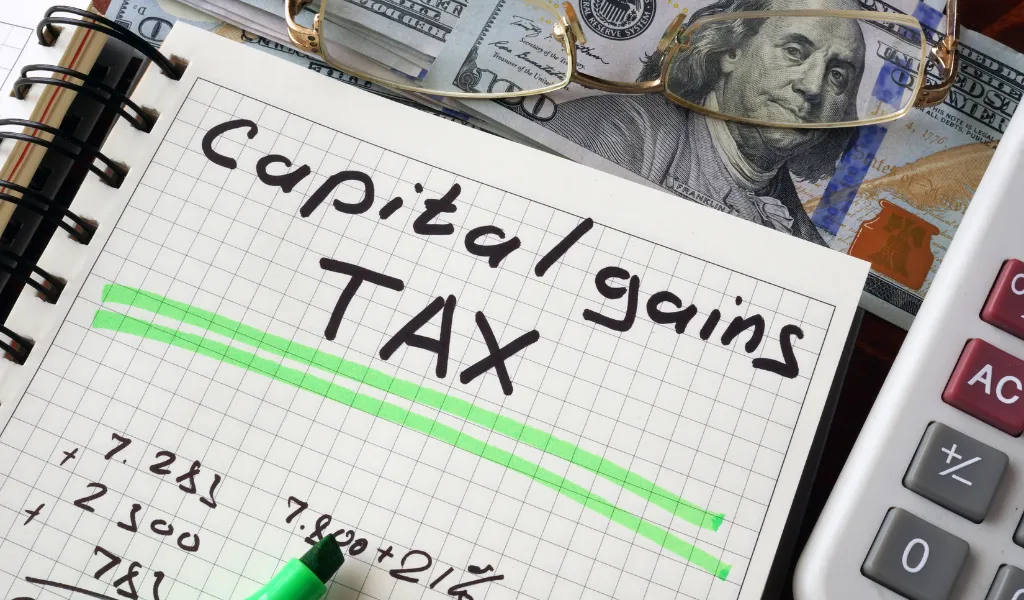Undoubtedly, it is a major undertaking to hire employees and run a business in the UK. One of the most important tasks you must perform is to manage payroll. Do not forget that you must also navigate employment regulations. Dealing with all this can feel overwhelming. To manage your workforce effectively, you need to comprehend the payroll system in the UK. This guide will cover everything you should know about the payroll process.
First, let us discuss the PAYE system. Then, we can move on to calculating payroll taxes.
What Is PAYE?
To collect Income Tax and National Insurance from employment, HMRC implemented a system called Pay as You Earn (PAYE). If you do not have any employees who earn £120 or more weekly, then there is no need for your business to register for PAYE. Other exceptions include employees that receive a pension, work at another job, or gain benefits and expenses.
Please note that you still should keep all your payroll records. You may need them.
What are PAYE Payments and Deductions?
When paying your employees via payroll, you need to make sure to deduct for PAYE.
You must do the following when you make payments to your employees:
- Add their total pay, along with any bonuses or tips.
- Inclusion of any maternity pay or statutory sick pay is necessary.
When you make deductions from employee’s pay, you need to do the following:
- It is a requirement to deduct any tax and National Insurance for most employees.
- Deductions for student loan repayments or pension contributions may also be required.
When Do You Need to Report to HMRC?
It is mandatory for you to report the payments and deductions of your employees to HMRC if you if you use a payroll software or run it yourself. On or before each payday, you must report these details. Calculating how much tax and National Insurance you owe is possible by using payroll software.
For every employee who earns £170 weekly, it can figure out the National Insurance contribution. If statutory pay causes reductions, you need to submit a separate claim report. Or if there is any other cause for reductions.
Usually, you must pay HMRC monthly after you figure out how much you owe. In case the circumstances of a current employee change, you should report it. For example, when they reach the State Pension age or become a director. Also, you need to report the joining of a new employee.
What are Payroll Taxes in the UK?
In the UK, payroll taxes refer to National Insurance contributions and income tax. They are handled via the PAYE system. Private health insurance, entertainment expenses, travel, and company car are all examples of another employment tax relating to the tax payable on benefits. HMRC collects all UK employment taxes from businesses through the PAYE system.
Along with these payroll taxes, employers need to make other deductions from gross employer salaries. These can include student loan repayments and student loan repayments. In certain cases, Child Maintenance Payments may apply.
National Insurance
In the UK, employees, employers, and self-employed individuals need to pay a contribution. This is called National Insurance. Now, what is the purpose of NI? Well, it uses these contributions to make payments for Jobseeker’s Allowance and State Pension. Not only this, but it covers bereavement support payments and much more.
National Insurance has different classes. Various factors determine these classes, such as whether an individual is self-employed and their earning thresholds. Voluntary payments made to fill in gaps in NI records is also a determining factor.
“Primary Class 1 NIC” refers to an employee’s Class 1 NIC. Employers make these payments by taking a straight salary deduction from their employees. On the other hand, primary class 1 NIC is only required to deduct when a certain minimum income level is met.
The minimal income criterion for the tax year 2023–2024 is £242 per week, £1,048 per month, or £12,570 annually.
Employers also must contribute to Secondary Class 1 NI. This is paid by the employer on behalf of the employees, as opposed to being subtracted from employee earnings. You are required to pay Secondary Class NI for all employees who make more than the £175 per week, £758 per month, or £9,100 per year (again, for the 2023–2024 tax year) income criteria.
| NI Class | Who Needs to Pay |
|---|---|
| Class 1 | Employers automatically deduct taxes from employees under the State Pension age who make more than £242 per week from a single employment. |
| Class 1A or 1B | On the benefits or expenses of their employees, employer pays these directly. |
| Class 2 | Self-employed individuals making profits of £12,570 or more annually. |
| Class 3 | Individuals pay these voluntary contributions to avoid or fill gaps in their National Insurance records. |
| Class 4 | Self-employed individuals making profits of £12,570 or more annually. |
Income Tax
HMRC collect income tax[NH1] of UK employers through the PAYE system as it is a payroll tax. This collection takes place every time employers pay their employees. It is the responsibility of the employer to deduct NICs and tax from the pay of an employee. They also must report any additional taxable benefits-in-kind to HMRC. Payroll software comes in handy in this regard. It can calculate the amount of deduction and how much is payable to HMRC automatically. The level of income and the amount of qualifiable personal allowance determine the amount of income tax that is deductible from the employee’s pay. Their tax code dictates the personal allowance that is eligible.
Workplace Pension
Enrolling their employees in a workplace pension scheme is mandatory for employers in the UK. Contributing to this scheme is a requirement for both parties.
Depending on the chosen pension scheme of the employer, the rates of pension contribution vary. However, paying at least 3% of the 8% minimum tax is necessary for employers.
There are specific circumstances where employees are exempt from making pension contributions. Please note that circumstances are rare. For example, the individual is from an EU state and takes part in a pension scheme which is a cross-border. Nevertheless, contribution to the workplace pension is a requirement for employees between 22 and the State Pension age. They must earn a minimum of £10,000 annually.
Benefits in Kind (BIKs)
If a perk benefits an employee personally and has no identifiable business purpose, it is called a BIK. Taxable BIKs include company cars, personal phone plans, private medical insurance, and entertainment expenses.
13.8% of the monetary value of taxable BIKs that employees receive are contributions by employers.
When it comes to BIKs, employees also owe taxes. Depending on the nature and value of the benefit, employee tax rates vary.
Here is an example to elaborate.
Suppose employees receive a cash bonus on Christmas. Then their employer must treat it as an additional employee earning. Therefore, they will make the appropriate deductions on the behalf of the employee through the PAYE system.
How to Calculate Payroll Taxes in the UK?
You need to determine the gross earnings of your employer first to calculate payroll taxes and contributions. The next step involves calculating employment tax liability for workplace pension, NICs, and BIKs if they apply. Moreover, you must work out employee income tax as specified percentages of the gross earnings of the employee.
In the UK, employers usually calculate and remit payroll taxes through the PAYE system. When creating a distributed workforce, you need to factor payroll taxes into your total employee cost calculations. This is because payroll contributions and taxes sum up to per-employee costs in addition to base salaries.
What is the Process of Setting Up Payroll?
Although individual circumstances determine the procedure of payroll, the following outline will indicate the major aspects of the payroll system:
- Registering your business with HMRC is a requirement to register as an employer. Then, you can get a PAYE login.
- To record details of employees, calculate deductions and pay, and report PAYE information online to HMRC, you need to select an appropriate payroll software.
- For each role, you must define salaries. Also, find out the correct contributions and withholdings for NIC, BIK, employee income tax, and Workplace Pension.
- Calculating and withholding deductions from earnings of employees is necessary. According to the established schedule, pay employees. Also, give employees a payslip, which shows their net earnings and withholdings.
- Maintain records of all payments, deductions, and payslips of employees. Through a Full Payment Submission (FPS), report them to HMRC.
- For new employees, form important details. For example, their tax code. Using an FPS register every new employee with HMRC.
End of the Year Checklist for Payroll
The end of the tax year aligns with the end of the payroll year. It is on 5 April 2024 for the current year.
For employers, this date marks a crucial milestone. It is important for them to complete their paperwork and tasks within the respective deadlines. To maintain compliance with regulations, employers need to meet these deadlines. It is their obligation as an employer.
An employer can remain organised by following this simple checklist:
1. Submit Final FPS to HMRC
On or before the last payday of the tax year, the employer must submit the final Full Payment Summary (FPS). When submitting the FPS, you should choose ‘Yes’ for ‘Final submission for year’.
In case this option does not exist in the payroll software of the employer, you need to submit the Employer Payment Summary (EPS) in its place. The same applies if you miss this option unintentionally.
After submitting the final FPS, if the employer finds any mistakes or errors, they can correct them through submission of an additional FPS. You can find more information regarding rectifying previous errors on the HMRC website.
2. Update the Payroll Records of Employees
For every employee that worked with them throughout the relevant tax year, employer must ensure they have arranged payroll records. Also, they need update their payroll software according to any changes in the employee’s tax codes. It is the responsibility of HMRC to notify employers regarding any employee who needs a new tax code.
3. Report Benefits and Expenses to HMRC
For every employee that receives taxable benefits or expenses, employer must submit a P11D form to HMRC. By April 22nd, employer needs to pay class 1A NIC that they owe on these taxable benefits and expenses through online payment. Nevertheless, by July 6th they must submit the P11D report to HMRC.
4. Provide Every Employee with a P60
For every employee on the payroll who is working until the last of the tax year, employer needs to provide a P60. This means they are working with the employer till April 5th. A summary of the total earnings and deductions of the employee for the tax year forms a P60. After the end of the tax year, employer must give a P60 to every employee. The last day to do so is May 31st.
5. Begin Payroll for New Year
It is crucial that the employer updates their payroll software before they process the payroll for the new year. In case the version they are using is older than 14.2.14330.88, they need to install basic PAYE tools once more. In the bottom-left corner of the tool, they can find the version number. To make sure that the payroll software they are using features the most recent threshold and rates for National Insurance and Income tax, they must perform this step.
Conclusion
As an employer, you should know the rules regarding payroll in the UK. When it comes to payroll taxes, make sure you understand the necessary deductions that need to be made. Before you set up a payroll system, you need to know how to calculate payroll taxes. Payroll software is useful in this regard. It will do all the calculations for you. Furthermore, you can make a checklist for payroll, which will come in handy at the end of the year.








